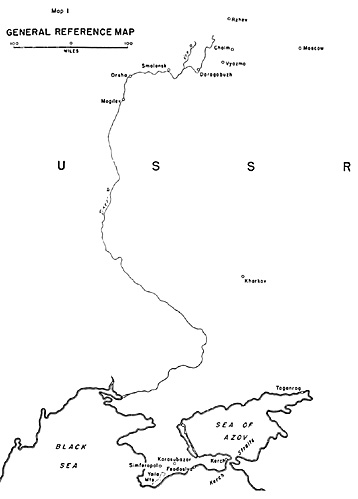The reader of the pre-war German Army operations manual, upon reaching the chapter heading "Night Combat," found that the subject was covered very succinctly and somewhat superficially. The contents failed to reveal the tremendous importance that night combat and night movements were to assume in modern warfare.
During two world wars, night and other periods of poor visibility, such as fog and snowstorms or rainstorms' gradually came to be considered the ideal time for action. Interference from the air reduced fighting and paralyzed movements in daylight hours, with the result that the space between the front and the most remote corner of the rear areas was often empty and deserted. During the hours of darkness combat and movements resumed with new intensity. After a while the German soldier considered this mole-like existence as normal, but the conclusions that should have been drawn from these undeniable facts in setting up training schedules were completely inadequate.
In Russia more and more actions occurred at night. Once this was widely recognized during the later years of the war, much of the individual and unit training took place during darkness and other periods of poor visibility.
The farther the recruit is removed from nature, the more night training he must get. Once a soldier has learned how to move and fight at night, he will be all the more effective in daytime when good visibility facilitates his tasks.
The purpose of movements in darkness or obscurity is to conceal preparations and thereby achieve maximum surprise and effect. Another important consideration is that night combat keeps the casualty rate at a minimum. Both elements apply to any operation from the time of assembly until its conclusion, whether it is a small unit action or a strategic envelopment.
Movement and combat at night are inexpedient when a certain minimum amount of orientation is impossible because terrain conditions and the enemy situation are too uncertain, or when the moon or enemy action create conditions resembling daylight. Bright nights make it easier to conduct night operations, but they give the enemy more opportunity to observe and interfere.
To overcome these difficulties, units accustomed to night fighting learned to apply certain practical lessons. Night movement and night combat require the most exacting preparation by officers and men, including detailed map and terrain study. Even for well-trained troops, poor visibility will cause delays that may result in a lowering of the over-all march performance or may involve loss of initiative and freedom of action. The larger the units, the greater the difficulties that will inevitably arise.
Careless night movement along roads and on the battlefield enables the enemy to take effective countermeasures. Depending on the enemy's potential and the ability of his leaders, the advantages friendly forces derive from operating in darkness may not only be cancelled out, the execution of the entire operation plan may be jeopardized by a complete stoppage of every movement, by a disruption of the chain of command, and by panic.
Before any night operation the responsible commanders must familiarize themselves with the theater of operations, become thoroughly acquainted with the enemy's materiel and his methods of employing them, and observe carefully his tactics in different situations. Possessing this knowledge, a field commander will be able to decide whether the principles of night combat should be applied rigidly or whether there may be some relaxation.
Under conditions as they exist in central and eastern Europe, troops must be capable of carrying out night marches in such a manner that their performance will not be greatly affected by observation and interference from the air. Once under way, movements in the combat zone must be completed according to schedule, even in the face of surprise enemy action. This may be achieved by breaking down units into small components, by camouflaging them, and by applying other protective measures.
The intended operations must achieve surprise, so that the enemy is not prepared f or counteraction. However, it must be assumed that during large- scale operations only the preparations and the initial engagements will take place under cover of darkness. To bring the fighting to a successful conclusion will require efficient inter-unit communication, a clear view of the situation and the terrain, and the exercise of firm leadership-demands that can be met only in daylight.
Night operations require the closest contact among ground units and among all components of services operating in a given theater.
Bombing and strafing missions against movements behind the enemy front may save lives and decide battles; the same thing is true of day and night attacks on enemy aircraft and airfields, which facilitate movements behind one's own front and, in some instances, constitute a prerequisite for the execution of such movements without severe casualties.
Night marches and night combat make greater demands on the troops than similar daytime operations. The responsible commanders must bear this in mind if reverses are to be avoided. Therefore, there must be some nights during which the troops may rest, because even relatively quiet sleep in daytime cannot replace rest at night. Through the use of excellent staff work and troop, discipline the number of full night rests can be reduced to a minimum, but they cannot be eliminated entirely.
General Reference Map

Back to Night Combat Table of Contents
Back to List of One-Drous Chapters: World War II
Back to List of All One-Drous Chapters
Back to MagWeb Master Magazine List
Magazine articles and contents are copyrighted property of the respective publication. All copyrights, trademarks, and other rights are held by the respective magazines, companies, and/or licensors, with all rights reserved. MagWeb, its contents, and HTML coding are © Copyright 2002 by Coalition Web, Inc. This article appears in MagWeb (Magazine Web) on the Internet World Wide Web.
Other military history articles and gaming articles are available at http://www.magweb.com